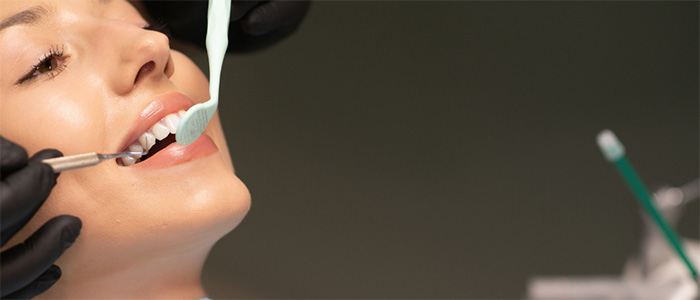
Children’s Dental Benefits Schedule Explained ($1,132 Free Dental Care)
5 October 2025
Why Professional Teeth Whitening Beats DIY Kits
5 October 2025Wisdom teeth are the last set of molars to appear, usually erupting between the ages of 17 and 25. For some people, these teeth come through without any issues. For others, they can cause pain, crowding, or even infections. Because every mouth is different, one of the most common questions people ask is: when is the right time to remove wisdom teeth?
Why wisdom teeth can cause problems
Our ancestors needed wisdom teeth for grinding coarse foods like roots and raw meat. Today, our diets are softer, and our jaws are generally smaller. This means there is often not enough space for wisdom teeth to come through properly.
When there isn’t sufficient room, wisdom teeth may:
- Erupt at an angle, pushing against neighbouring teeth
- Only partially break through the gums, leaving a flap of tissue that traps bacteria
- Remain fully impacted beneath the gums, potentially damaging the jawbone or roots of other teeth
These situations can lead to pain, swelling, infections, and alignment issues.
Signs wisdom teeth may need attention
Not all wisdom teeth need to be removed, but there are warning signs that suggest a problem is developing. These include:
- Pain or tenderness at the back of the mouth
- Red, swollen, or bleeding gums
- Difficulty opening the mouth fully
- Jaw stiffness or swelling
- Repeated infections around the same area
- Crowding or shifting of nearby teeth
If any of these symptoms appear, it is important to have them assessed. Left untreated, wisdom teeth problems can lead to more serious complications such as cysts or damage to neighbouring teeth.
When removal is recommended
Dentists often recommend wisdom teeth removal when there is clear evidence of impaction, infection, or risk to surrounding teeth. In many cases, the decision is made after taking X-rays or 3D scans, which show how the teeth are positioned below the gumline.
Removal is commonly advised if:
- The teeth are impacted and unlikely to erupt normally
- There are signs of infection, such as repeated swelling or gum irritation
- Nearby teeth are at risk of damage or shifting
- There are cysts or other abnormalities around the tooth
- The patient is planning orthodontic treatment and crowding is a concern
The best age for removal
While wisdom teeth can cause problems at any age, removal is usually easiest between the late teens and early twenties. At this stage, the roots of the teeth are not fully developed, and the surrounding bone is softer. This means the procedure is generally quicker, with fewer complications and faster recovery.
That said, adults of any age can have wisdom teeth removed successfully. The key is to make the decision before major problems develop. Waiting until wisdom teeth are causing pain or infection can make treatment more complex and recovery longer.
What to expect during removal
Wisdom teeth removal is a common procedure that can be performed under local anaesthetic, sedation, or general anaesthetic, depending on the complexity and patient preference. The process involves:
- Numbing the area to ensure comfort
- Gently removing the tooth, sometimes in sections if it is impacted
- Cleaning the site to prevent infection
- Placing stitches if needed to assist healing
Most people go home the same day. Mild swelling and discomfort are normal for a few days and can be managed with rest, ice packs, and prescribed medication.
Recovery and aftercare
The first 24 to 48 hours after removal are the most important for healing. Patients are usually advised to:
- Rest and avoid strenuous activity
- Apply cold packs to reduce swelling
- Stick to soft foods such as yoghurt, soup, or smoothies
- Avoid drinking through straws or smoking, as this can dislodge the blood clot and delay healing
- Keep the mouth clean by rinsing gently with salt water after meals
Most people feel back to normal within a week, though full healing of the bone may take a little longer.
Do all wisdom teeth need to be removed?
It’s worth noting that not everyone requires removal. Some wisdom teeth erupt fully, line up properly, and remain healthy. In these cases, regular monitoring during dental check-ups is usually all that is needed.
The decision always comes down to whether the teeth are causing problems or likely to cause them in the future. Preventive removal is often advised if scans show that complications are highly likely, even if there are no current symptoms.
Taking the next step
Wisdom teeth removal is one of the most common oral surgeries, and for good reason — it prevents pain, infections, and long-term damage to surrounding teeth. The right time to remove them depends on each individual’s situation, but early assessment provides the best chance for a straightforward procedure and smooth recovery.
Book an appointment today to have your wisdom teeth assessed and find out if removal is the right step for your oral health.




